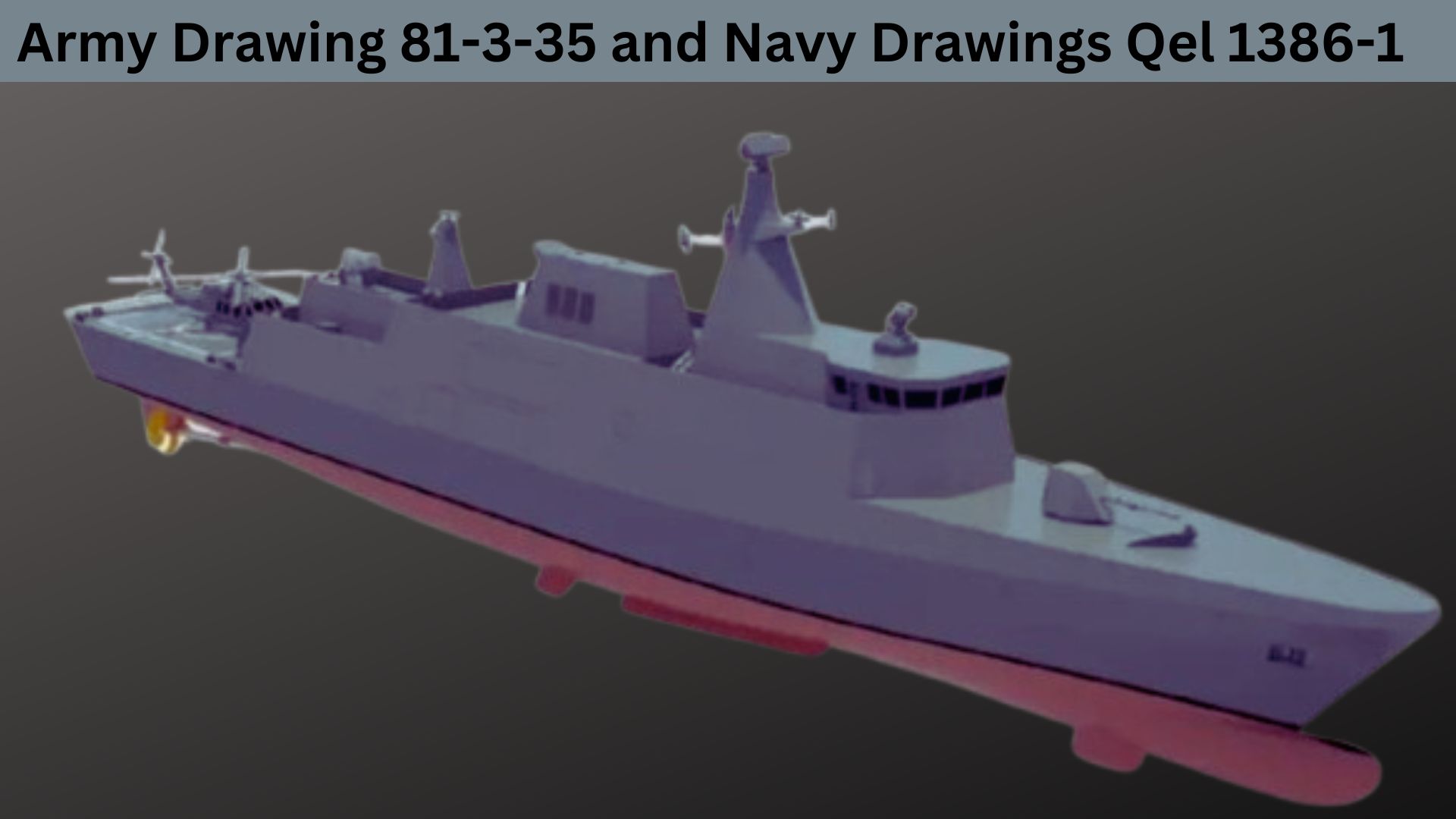Military documentation is the backbone of any operation, ensuring precision and clarity are maintained in all processes. One such essential document for military operations is Army Drawing 81-3-35 and Navy Drawings QEL 1386-1. These drawings serve as comprehensive technical blueprints for military equipment, laying out detailed specifications crucial for design, manufacturing, and operational functionality. Whether for the Army or the Navy, these drawings ensure standardization, safety, and operational success across different military sectors.
Why Army Drawing 81-3-35 and Navy Drawings QEL 1386-1 Are Essential
The significance of Army Drawing 81-3-35 and Navy Drawings QEL 1386-1 extends beyond mere technical drawings. These documents are vital to military engineering, ensuring consistency across various armed forces branches. By adhering to these standardized drawings, manufacturers and engineers can produce equipment that meets the strict quality control required for military applications. Ensuring that the equipment adheres to the specifications outlined in Army Drawing 81-3-35 and Navy Drawings QEL 1386-1 prevents discrepancies, maintains functionality, and avoids potential malfunctions during critical missions.
Detailed Overview of Army Drawing 81-3-35
Army Drawing 81-3-35 outlines technical information such as dimensions, materials, and assembly instructions. It specifies the standards that must be met during the production of military-grade equipment. The drawing guides engineers and manufacturers in producing uniform equipment for Army missions. The precision offered by these drawings ensures that each equipment component is built to withstand the rigorous demands of field operations, enhancing the reliability and durability of the final product.
This drawing specifies physical dimensions tolerances and finishes, critical factors in ensuring that military equipment operates effectively under extreme conditions. These specifications are crucial in preventing deviations during manufacturing and provide a reference for quality control checks at each step of production.
Understanding the Significance of Navy Drawings QEL 1386-1
Just like the Army, the Navy operates under strict technical guidelines to ensure the performance and durability of its equipment. Navy Drawings QEL 1386-1 serve as the primary reference for producing naval equipment that meets the standards necessary for maritime environments. These drawings include the mechanical and technical requirements for ship-based equipment, focusing on ensuring long-lasting performance in harsh conditions such as saltwater corrosion, high winds, and continuous operation.
The Navy Drawings QEL 1386-1 also incorporates electrical schematics, hydraulic system details, and other vital information, ensuring the equipment functions flawlessly on naval vessels. Each detail is crucial for properly integrating various systems, allowing Navy ships to operate without failure.
How Army Drawing 81-3-35 and Navy Drawings QEL 1386-1 Work Together
Although developed for different military branches, Army Drawing 81-3-35 and Navy Drawings QEL 1386-1 work harmoniously to standardize equipment across the armed forces. This interoperability allows parts and components to be interchangeable between the Army and Navy. Such standardization is essential in joint operations where different branches collaborate closely. Using standardized parts, military units can efficiently replace and repair equipment during missions without worrying about compatibility issues.
This level of collaboration and integration is a crucial factor in enhancing the military’s operational readiness. It ensures that equipment meets the same rigorous standards regardless of the branch it belongs to. It simplifies logistics and allows for more efficient resource management.
The Role of Army Drawing 81-3-35 and Navy Drawings QEL 1386-1 in Manufacturing
Manufacturing military equipment is a highly regulated process that requires precision. Manufacturers use Army Drawing 81-3-35 and Navy Drawings QEL 1386-1 as their primary guide throughout production. These drawings are blueprints for designing, assembling, and testing equipment to meet military standards. They provide detailed technical instructions, ensuring that no aspect of the manufacturing process is left to interpretation.
Factories producing military hardware rely heavily on these detailed drawings to ensure consistency, accuracy, and reliability. Any deviation from the drawings could result in equipment failure, posing serious risks in the field. Hence, manufacturers are required to adhere strictly to these specifications during production.
Ensuring Military Compliance with Army Drawing 81-3-35 and Navy Drawings QEL 1386-1
Compliance with military standards is essential for maintaining equipment safety and functionality. Army Drawing 81-3-35 and Navy Drawings QEL 1386-1 ensure that every piece of equipment meets the required safety and performance standards. These drawings guide manufacturers to avoid costly mistakes, ensuring that equipment functions reliably in extreme environments.
The detailed instructions in these drawings prevent confusion and miscommunication between engineers, contractors, and military personnel. By following the specifications outlined in Army Drawing 81-3-35 and Navy Drawings QEL 1386-1, manufacturers can produce equipment that adheres to the high standards set by the military, avoiding costly repairs or replacements in the field.
Quality Assurance and Control Through Military Drawings
One key function of Army Drawing 81-3-35 and Navy Drawings QEL 1386-1 is to act as a quality control tool. Each production phase must be checked against these drawings to ensure no errors are made. This process of continuous quality checks helps maintain consistency and ensures that every component meets military requirements before being deployed. These drawings set the standard, ensuring all equipment is tested, verified, and validated for performance.
Conclusion
Army Drawing 81-3-35 and Navy Drawings QEL 1386-1 are indispensable military arsenal tools. They provide detailed instructions for the design, manufacturing, and quality control of military equipment, ensuring that every piece produced is of the highest standard. The precision and accuracy provided by these technical documents support the operational readiness of the Army and Navy, ensuring that all military personnel are equipped with reliable, high-performing tools essential for mission success.
